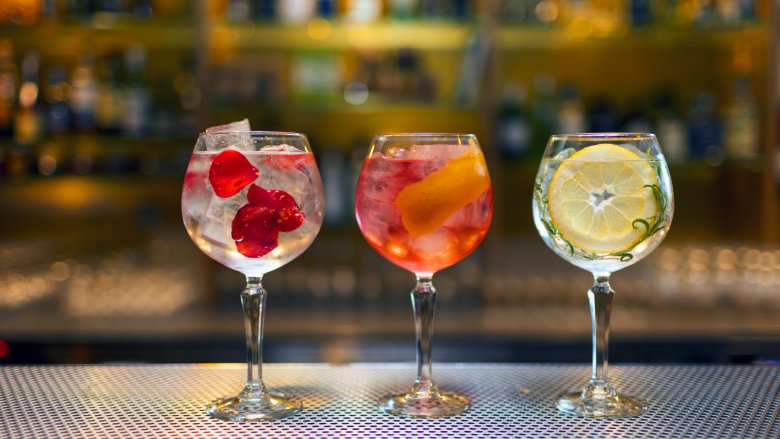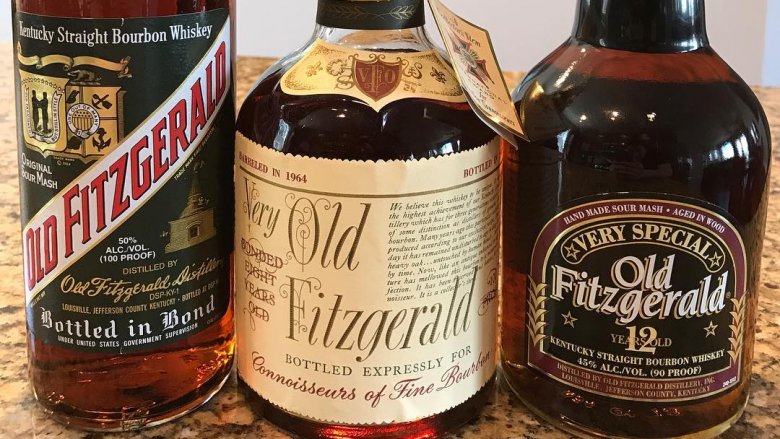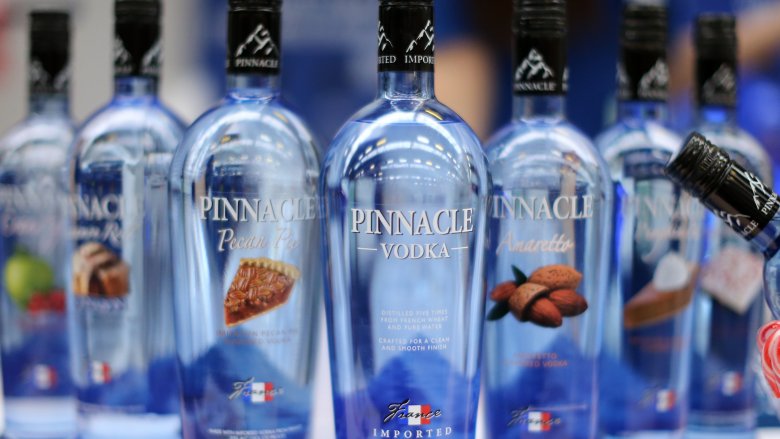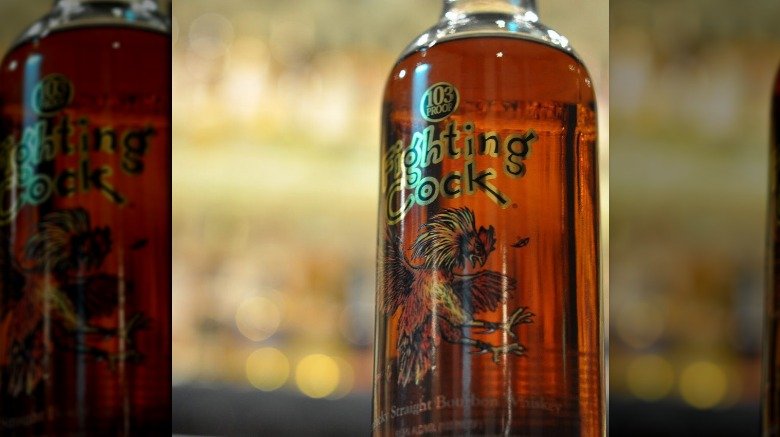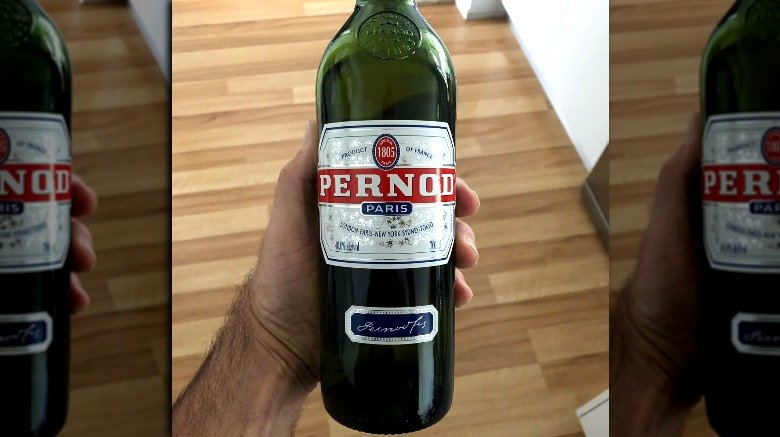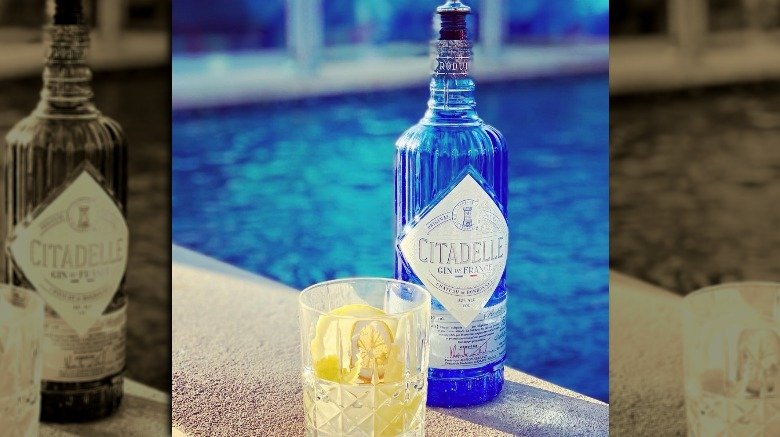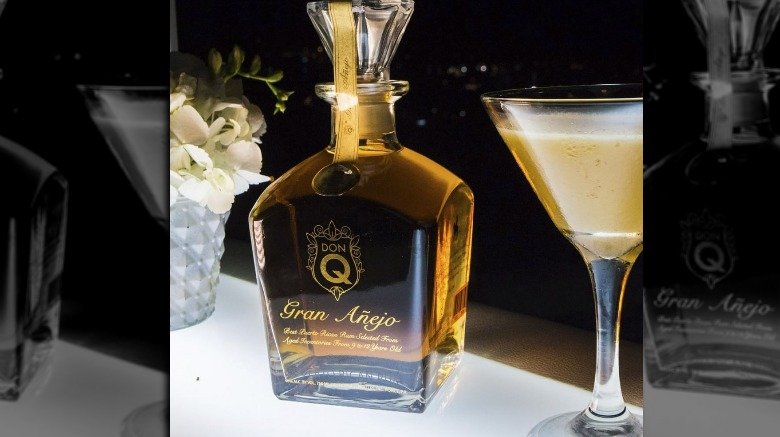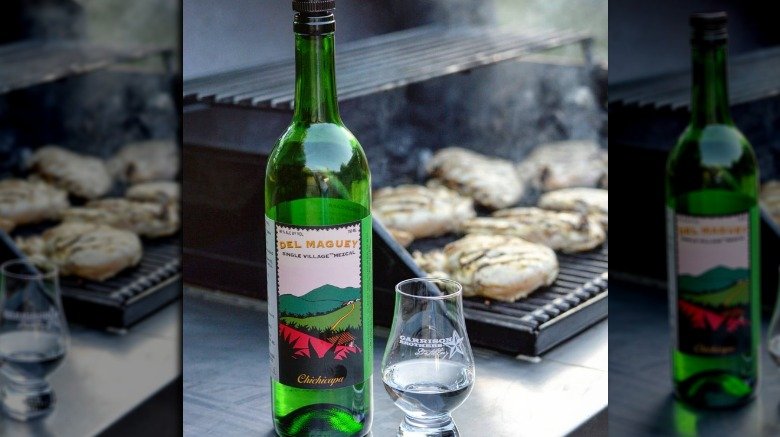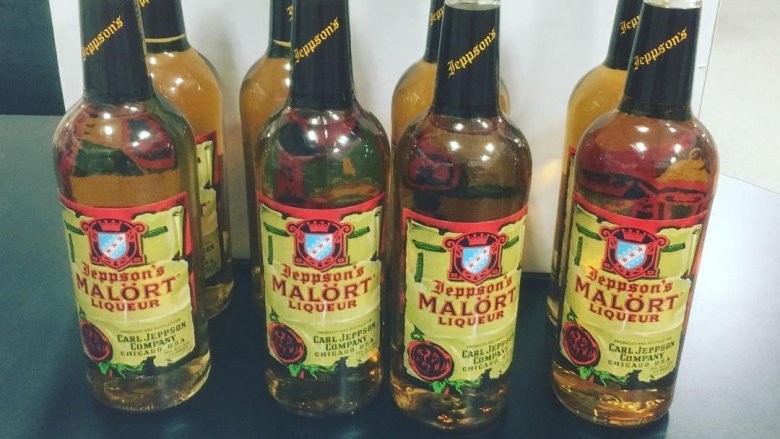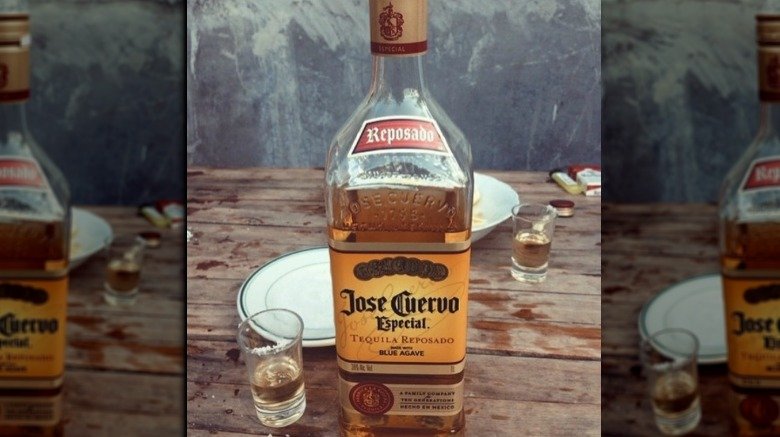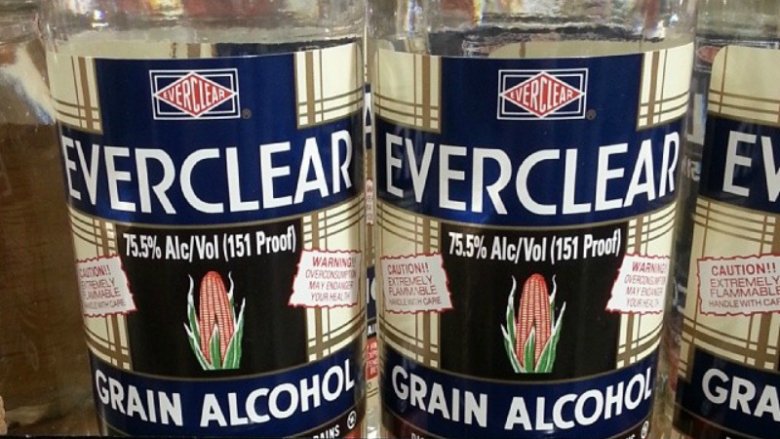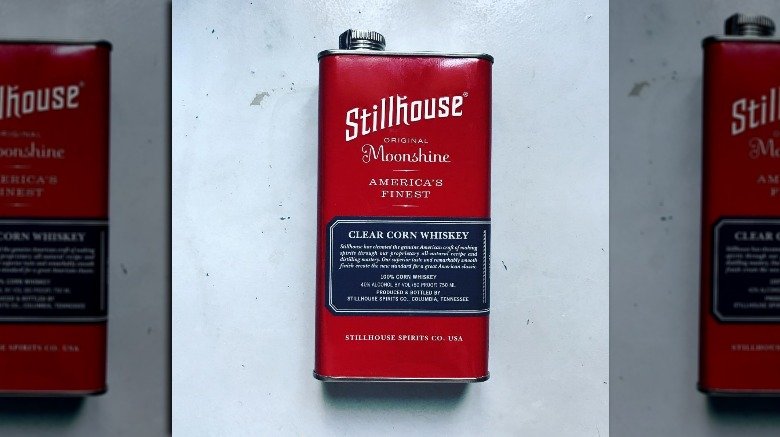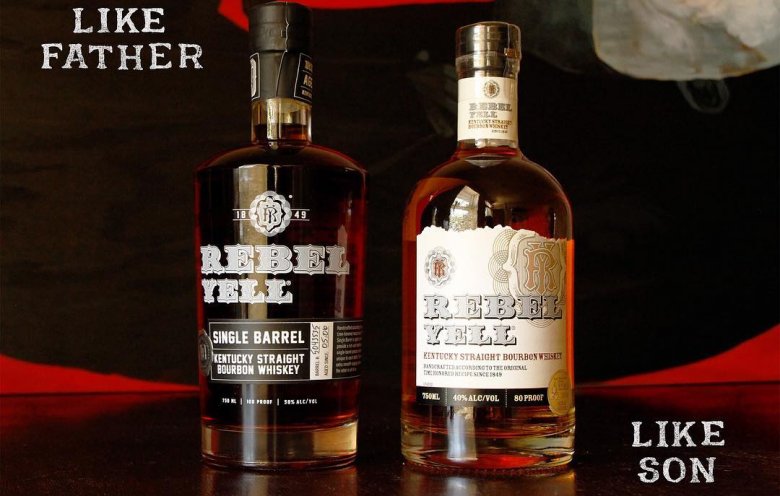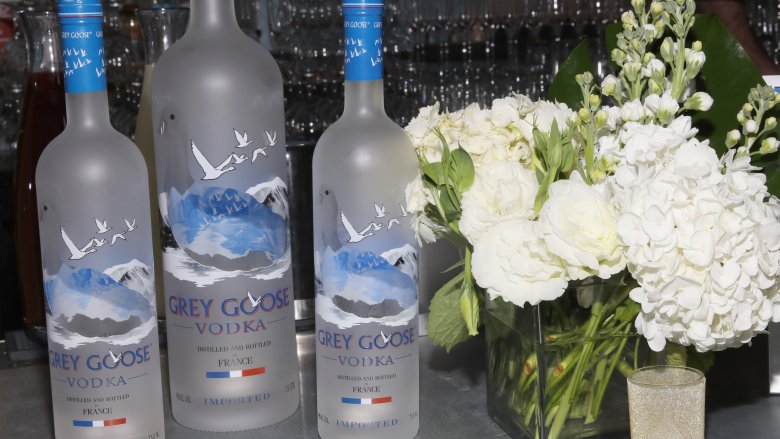7 Liquors You Should Be Drinking And 7 You Shouldn't
It's no secret that there are so many different kinds of liquor that it can be tough to know what you're getting — even after you've spent way too much time stressing over the decision. If you're heading to the liquor store to pick up something for a party, how do you know you're going to be greeted with an earnest smile instead of an eye-roll? Sometimes, all you can do is make a guess (based on what, the pretty label?) and hope for the best. That, or grab for the same thing you pick up every single time. Fortunately, there are some sure-fire wins that'll definitely get your desired response with no need to stick to the tried-and-true favorites. There are some giant misses, too, and whatever you do, you don't want to show up with those. Read on for the liquors you should definitely be drinking, and the ones you should ban from your liquor cabinet.
Do drink: Old Fitzgerald
There's a lot to be said for pouring yourself a little something after a long day, and if you're looking for something that won't make you cringe when you see the price tag, check out Old Fitzgerald. It was originally made in the 1870s as a sort of exclusive, premium bourbon, and it actually survived prohibition by getting a medicinal distilling permit. The recipe has changed since then, but it still has a way of making you feel a whole lot better.
Pick up a bottle of Old Fitzgerald Bottled in Bond, and you'll get a decent bottle for bottom-shelf prices. There's a little bit of honey flavor, a little vanilla, and a lot of oak. There's none of the harshness that you might expect from something in that price range, either, and that all makes this one a great choice to keep on a shelf in your kitchen.
Do drink: Pinnacle Vodkas
Everyone either loves flavored vodkas or knows someone who does. There are a ton of options out there, and some of them are pretty pricey. There's no reason to drop a huge amount of money on a flavored vodka, though — not when France's Pinnacle vodka has a top-shelf quality for bottom-shelf prices. Even their unflavored vodka is respectable — they took home top honors at the 2013 International Wine & Spirit Competition. It's definitely good enough to add it to any mixer you want and it won't be harsh or overpowering... and the flavors!
Pinnacle offers a huge variety of flavors, from strawberry and cranapple for the fruit lovers to habanero for those who like it spicy and salted caramel for those who can't get enough of dessert. Why pay three or four times the price for a high-end vodka when you have a perfectly respectable option at a low price point?
Do drink: Fighting Cock
Don't let the name — or the label — scare you away from this one. If you've been put off by the appearance but you're in the market for an affordable bourbon that's full of flavor and spice, you should absolutely give it a try. It's heavy on the spice, has a dash of favorites like caramel and vanilla, and since it clocks in at 103 proof it's not going to get lost if you use it in a cocktail.
Since it's aged six years, it's smooth enough that you can definitely just drink it on the rocks, if that's more your style, and there are plenty of nutty, woody, slightly fruity flavors to enjoy. It's more complicated than you might expect, and given the super-affordable price point coupled with the odd marketing, it's not surprising that you may never have afforded this one a second glance. You should.
Do drink: Pernod
Picking out a good absinthe can be incredibly tricky. What color green is it supposed to be? What's authentic? What has too much anise flavor?
Fortunately, there's a widely available absinthe that's a great place to start. It's called Pernod, and it's 100 percent authentic absinthe. The oldest distilleries date back to 1805, and yes, absinthe was banned for decades in spite of the fact that it's not any more dangerous than any other type of alcohol, and it doesn't cause you to hallucinate. Once the ban was lifted, Pernod returned with the same recipe and traditional process they used pre-ban. It can be a bit pricey, but also keep in mind that you shouldn't drink this as fast as you would a vodka or rum. That bottle will last you for quite a while (if you prepare it right, which is an absolute must). It's meant to be sipped and savored, and the balance of flavors in this one makes it well worth the price.
Do drink: Citadelle
Gin can be a tough one. Some appreciate the floral flavors, others think it tastes like someone dropped a pine cone in their drink. There are a few things that make Citadelle a great choice whether you're a gin lover, someone who's not sure about it, or someone who's trying to expand their palate.
First, is the price. You can probably pick up a bottle for around $25, and that means you won't feel guilty trying something new. Second, there's a slight fruitiness to this one that makes it not as overwhelmingly floral as some gins. If you're put off by the juniper, this one has some citrus flavor and a lemon peel aroma that might change how you feel about pouring yourself a refreshing gin and tonic. You can rest assured knowing that you're drinking something with a history, too — the recipe dates back to 1771, when Louis XVI authorized the opening of a new distillery at Dunkirk.
Do drink: Don Q Rum
If you make purchases with an eye toward the environment, you might be heartbroken to know that rum is largely an environmentally unfriendly liquor. You've got the damage done by the massive sugar plantations, the toxic gases released from turning sugar into molasses, and a lot of leftover byproducts that have historically been dumped into the oceans.
Fortunately, there's a rum choice you can make in good conscience, and that's Don Q Rum. This Puerto Rican rum is made with an eye toward sustainability, and they've made major commitments to making the process as environmentally friendly as it can be. That includes things like reusing their shipping pallets, turning some of their organic waste materials into fertilizers and mulch, and routing the steam from their boilers through a turbo-generator to create electricity. Don Q has invested millions into upgrade their facilities and methods, making them a rum Earth will thank you for drinking.
Do drink: Del Maguey
Picking out a good tequila or mezcal can be intimidating, especially given how many people seem to have a hate-hate relationship with this particular liquor. But if you want to try something you know is going to have a positive impact on people and be super-sustainable, Del Maguey is the way to go.
Del Maguey is made with the help of 12 villages in the Oaxaca region of Mexico. When founder Ron Cooper set up the roots of Del Maguey in 1996, he chose to work with villages that were growing semi-wild, semi-cultivated plants rather than sourcing materials from artificially cultivated plantations. They're implementing management strategies they hope will leave a positive impact on the environment — they've also invested heavily in renewable energy, water accessibility projects, and education projects for their employees' families. According to Cooper, they're still growing and harvesting maguey in a way that will "protect the spirit of maguey." That makes this a good choice for anyone who wants to be environmentally secure in their choice of liquor.
Don't bother drinking: Malort
Listen to the basic description, and Malort doesn't sound too bad. It's Chicago's drink of choice, but according to one bartender, it's got the same soul-sucking abilities as a Chicago winter. It's made with Swedish wormwood, and there's a reason that sounds familiar: it's the same thing that goes into making absinthe. Malort is definitely not absinthe, though, and according to the same bartender, award-winner Toby Maloney, it's popular because a certain sort of person likes an unbearably bitter shot, and, more importantly, a certain type of person enjoys giving other people incredibly bitter shots just to see if they'll get sick. Malort is a terrible, terrible rite of passage — it's alternately described as burning, a tire fire, and the emotional equivalent of standing in a prison shower. Needless to say, give this one a miss at all costs. Also, don't be that kind of person.
Don't bother drinking: Jose Cuervo Especial
Anyone who's ever had a bad experience with tequila has probably had it with Jose Cuervo Especial. It's cheap, it's the stuff of a 20-something's Friday nights and frat parties. You might already have some negative feelings about this one, and not only can you blame it for the worst hangover you've ever had, but you also for ruining the idea of tequila for yourself, and here's why.
Jose Cuervo Especial is what's called mixto, and that means only 51 percent of the alcohol content actually comes from agave. In good tequila, that jumps to 100 percent, and there are tequilas in the Jose Cuervo family that do have 100 percent agave alcohol... just not this one. Jose Cuervo Especial is labeled as being tequila because it technically is... but only on a technicality. Give this one a miss, and pick up a bottle of the real stuff: you'll know it because it'll proudly declare it's 100 percent agave right on the label.
Don't bother drinking: Everclear
No good night ever started with the decision to drink Everclear. It may even be responsible for some of the worst nights of your life, and there's a reason for that. It has the highest alcohol content of any liquor, and it's a dubious honor that's unlikely to be taken away, as it's chemically impossible for anything over 191-proof to even exist.
There are some states where you can't even buy it and one — Pennsylvania — that you can only buy it if you prove you're not going to actually drink it. Being an excellent cleaning product is one of the sure signs that you probably shouldn't actually drink something. Not only that, but it's odorless and it's sneaky, it'll make you black-out drunk faster than you expect, and maybe strangest of all, it clocks in at a whopping 190 calories per 1-ounce serving (most other liquors are around 60 calories). All that means you're going to be in a world of hurt if you even look at a bottle of this stuff... and if you've ever gotten drunk on it, you might be cringing right now.
Don't bother drinking: Moonshine Clear Corn Whiskey
Brewing your own beer and making your own wine was illegal in the US until 1978, and whipping up a batch of your own liquor is still illegal. Because Americans have never been fond of being told what to do, moonshine became a massive industry, especially throughout Appalachia. The prospect of getting some real, authentic-tasting (albeit legal) moonshine might seem pretty cool, but Moonshine Clear Corn Whiskey is in no way, shape, or form anything approaching authentic.
There are a few reasons that this isn't even a good approximation. It says right in its name that it's made from corn, and real moonshine was almost never made from corn. Instead, moonshiners would go with a fruit base, because it's a lot easier, faster, and cheaper to make gut rot liquor out of fruit sugars than corn sugars. And all that means is that if you're drinking this one because you think it might taste like authentic moonshine... it doesn't.
Don't bother drinking: Rebel Yell
Rebel Yell is another cheap, bottom-shelf sort of booze that's popular among the college crowd. Sometimes you get what you pay for, though, and while some of your college favorites might be worth revisiting, this one isn't.
There's a catch here, too. You might see this one at the liquor store and think that it looks a bit different from what you remember, and you'd be right. Rebel Yell was given a makeover in 2015, and its olde-timey Western labels were replaced with something that makes it look like it's some kind of artisanal, craft whiskey. The change was just on the surface, though, and the recipe remained exactly the same. It's still rough enough to kick you in the gag reflex, still unbearably sweet, and still harsh.
Don't bother drinking: Carnaby's Gin
You get your first impressions with appearance, so let's put it this way: Carnaby's Gin comes in a plastic bottle and has no official web site. There's not much smell to it, there's definitely none of the fresh, floral scent you might expect when you crack open a bottle of gin, and none of the citrus you might be hoping for in a more mild selection. You can probably find it for just a couple of bucks, and while there are some incredibly good, affordable liquors out there... this isn't one of them. It's so bland that you might as well just mix your tonic with tap water, and it's not even worth the tiny, tiny price. That goes doubly so because there are so many better options out there for only a bit more cash, and there's no reason not to shell out a couple more bucks to get something decent.
Don't bother drinking: Grey Goose
Grey Goose is routinely touted as being among the best vodkas you can buy, and that's reflected in the price. It's the bottle you turn up with when you want to impress, but it's not worth it.
Not only are you spending way too much on a bottle of vodka, but Grey Goose regularly fails taste tests when it's put up against other, cheaper vodkas. Refinery 29 put Grey Goose up against Titos and Smirnoff in a blind taste test, and Grey Goose was voted as tasting the cheapest. The Telegraph did a blind taste test with 10 different vodkas, and Grey Goose came in at number nine — well below bottles that cost a third of the price. And Under the Label had Grey Goose go head to head with Kirkland's Signature Vodka, which is the generic store brand of vodka for Costco — and Costco won. So, don't bother reaching to the top shelf for Grey Goose, because you can find something better for a fraction of the price.
